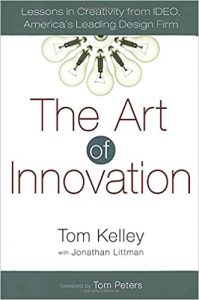
SHARPEN YOUR FOCUS
-What is the goal? Unless everyone understands the goal, future ideas have no real relevance.
-Create a vision of customers and their needs. A persona of the standard user and how will the concept benefit them.
-What does the finished product or service look like? Regardless of the inception stages, there has to be a slightly defined understanding of what it will be like once it’s completed.
USE PLAYFUL RULES
-Creativity doesn’t need to be fun, but it surely serves. Taking this process too seriously makes it difficult to think outside the box.
-Like in any other learning environment, games can often be utilized for innovative teaching and learning.
-Play the devil’s advocate. Making rounds where ideas are put to the test using a playful give and take can keep matters provocative.
Innovation is all about asking the right questions that reveal opportunities and threats:
Understand the market, consumer, technology, and limitations-
1. Who is the final consumer and what do they desire or need?
2. What other competition offers similar products or services?
3. What technology is available and is it sufficient to produce the product efficiently?
4. What are the barriers that need to be overcome?
Observe people, products, and services in real-life conditions-
-Data and analysis approaches can provide necessary information but people’s behaviour can reveal critical, practical points that must be considered.
-How does the end-user use similar and related products or services?
-Can the concept be designed to make it easy to use?
-Look for flaws or inconsistencies. These are the things the end-user will notice instantly.
An environment of innovation should have a sense of urgency. The world of business, entertainment, and particularly the digital world is moving fast, and the only way to get ahead is to innovate faster. The faster the innovation, the faster the service or product goes to market.
The overall innovation efforts have to be placed out there fast. Creating such a climate of speed not only drives innovation but also builds an inspiring and dynamic atmosphere where innovation flourishes. Don’t forget, the first to market often wins in the end.
# Key Takeaways:
– Innovation is not just about coming up with new ideas, but also about implementing them successfully.
– The key to successful innovation is a balance between creativity and structure.
– Companies should create a culture that encourages and rewards innovation.
– Innovation should be customer-focused and driven by understanding their needs and desires.
– Failure is a necessary part of the innovation process and should be embraced and learned from.
# Practical Application:
– Companies can use the “Ten Faces of Innovation” framework to identify and utilize different types of innovators within their organization.
– The “Three Core Competencies of Innovation” (building a deep understanding of customers, fostering a culture of experimentation, and empowering employees) can be used to guide and evaluate innovation efforts.
– The “Innovation Toolkit” provides practical tools and techniques for generating and implementing new ideas.
– The “Innovation Bootcamp” approach can be used to jumpstart innovation within a company.
# Valuable Insights for Leaders:
– Chapter 2: “The Deep Dive” offers valuable insights on how to conduct effective research and understand customer needs.
– Chapter 5: “The Ten Faces of Innovation” provides a framework for identifying and utilizing different types of innovators within a team.
– Chapter 7: “The Innovation Toolkit” offers practical tools and techniques for generating and implementing new ideas.
– Chapter 9: “The Innovation Bootcamp” provides a step-by-step guide for jumpstarting innovation within a company.
# Case Studies and Examples:
– The story of the development of the Swiffer, as well as other examples throughout the book, effectively illustrate the principles of customer-focused innovation.
– The case study of IDEO’s work with Procter & Gamble showcases the power of collaboration and cross-functional teams in driving innovation.
– The example of Pixar’s “Braintrust” highlights the importance of creating a culture that encourages open and honest feedback in the innovation process.
– The story of the development of the Palm V handheld computer demonstrates the importance of balancing creativity and structure in the innovation process.
Leave a Reply